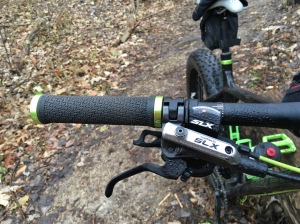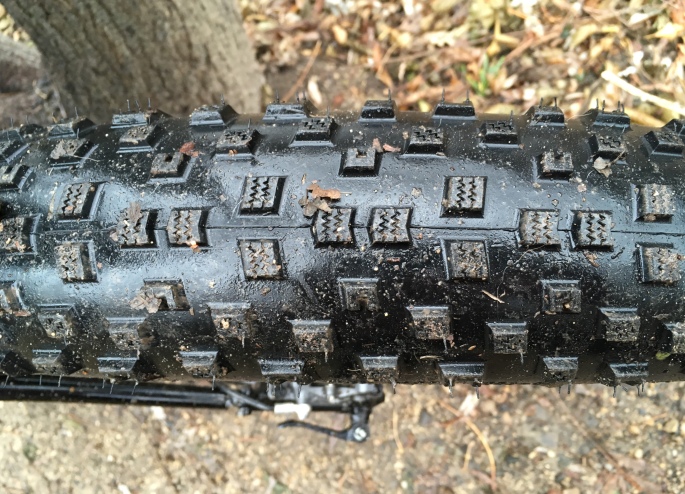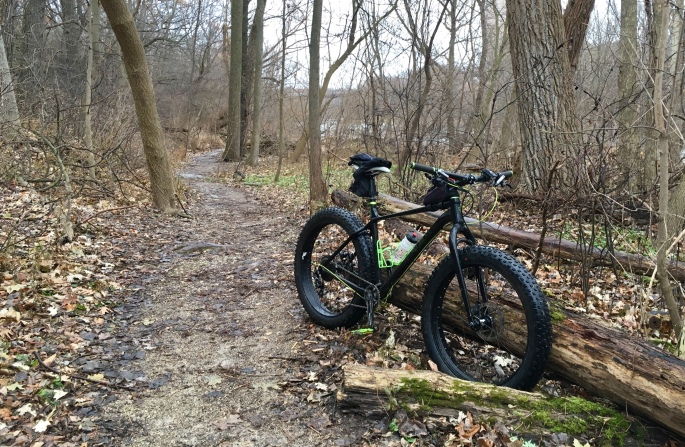Welp, I picked up a fat bike. Here are the reasons why I went fat, even though I might one day look back. This piece isn’t so much a fat bike review or comparison, but more of an observation of why I settled on a fat bike instead of a more conventional sized tire trail bike.

This summer I remembered I had an old 26” wheel triple chainring mountain bike hanging in my basement. I did a few things to it, got it riding ok, and started thrashing the heck out of it. Quite frankly, I was a little caught off-guard by how much I enjoyed riding on trails. I spent a few months riding two or three times a week and then started to feel that my skill had probably eclipsed the bike’s capabilities. I decided to begin looking around for a 29” wheel bike with modern geometry, gearing, and amenities like a dropper post and/or a lockout fork.

Then it snowed.
I considered that I’d end up realistically waiting until April or May before being able to get out onto the trails again. Having felt such enjoyment riding on the trails, I didn’t want to wait for the trails to dry out before being able to ride again. Enter the fat bike.
I shopped around for awhile and found this used first generation Trek Farley. It’s got an aluminum frame and fork and the tires are 3.8” Bontrager Hodags. This is the largest width tire that the first gen Farley will realistically fit. Having such a wide tire allows for what riders refer to as “float,” this is when having such a large contact patch allows the tire to move above a surface with greater ease, such as snow or mud. This tire isn’t as wide as more contemporary fat bike frames will allow, but I’m happy with having paid one third the price of new to get to know this style of riding.

So how does it ride? So far I’ve only been out a couple times (I picked it up two days ago) but it’s definitely a different feel than a 2.1” mountain bike. You definitely feel like you’re driving a monster truck, whereas the 2.1” tire might have been a Subaru. It’s not as responsive or quick handling as a smaller tire, but you have the sense of being able to roll over everything.
Speaking of rolling over everything, I’ve definitely noticed that sense of floating. It’s been rainy and the trails are muddy but not overall waterlogged. Definitely conditions in which I wouldn’t have had a clear conscience about creating trail ruts with a 2.1” tire. With the 3.8” tires, however, I’ve been able to ride above without ruining the trail. Days in which a little bit of rain before would make me not ride, now I feel like I can go out on the trails without damaging them.

When riding a fat bike, one definitely has a sense of requiring greater effort to turn the larger front tire, which isn’t surprising. Again, turning a monster truck compared with maneuvering a Subaru. I’m 5’10” and relatively stout so the greater effort required isn’t an overall issue for me, but it’s noticeable and something to consider if one happens to be more slight of build.
If you’re on the fence about riding trails or getting back on them after a long layoff, fat bikes can be a good option. I’m finding this one to be forgiving, confidence inspiring, and generally offers exceptional balance because the size of tire making contact with the ground is roughly about the same size as a human foot. You sacrifice razor-crisp handling to be able to ride year-round, and at the moment that’s a tradeoff I’m willing to accept.


